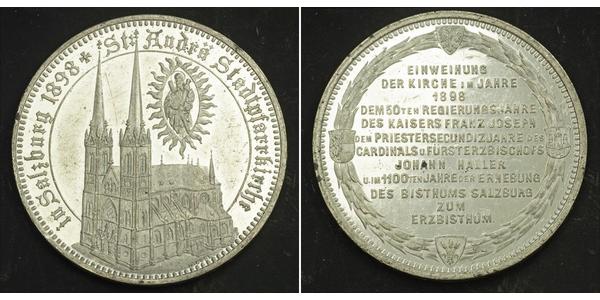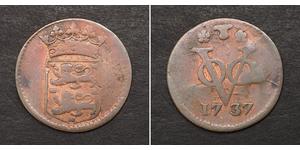(Verkauft für $14.0)
1898, Salzburg (Archbishopric). Large St. Andrew´s Church Inauguration Medal. XF+
Mint Year: 1898 Medallist: M. Gube Mint place: Salzburg (Austria) Reference: Horsky 4735, Montenuovo 3165. R! Condition: Minor contact-marks and scratches, otherwise a nice lustre XF-AU! Denomination: Medal - Inauguraiton of the St. Andrew´s (St. Andrä) Church in Salzburg Material: White metal Weight: 18.88gm Diameter: 39mm
Obverse: St. Andreas withing oval frame of flames above, St. Andä Church in Salzburg. Legend: in Salzburg 1898 + St. Andrä Stadtpfarrkirche ("In Salzburge 1898 + St. Andrs City-Parish Church")
Reverse: Legend in 12 lines within wreath, decorated with four shields. Legend: EINWEIHUNG DER KIRCHE IM JAHRE 1898 DEM 50TEN REGIERUNGSJAHRE DES KAISERS FRANZ JOSEPH DEM PRIESTERSECUNDIZJAHRE DES CARDINALS U FÜRSTERZBISCHOFS JOHANN HALLER U. IM 1100TEN JAHRE DES DER ERHEBEUNG DES BISTHUMS SALZBURG ZUM ERZBISTHUM
Translated: "Inauguration of the church in year 1898, the 50th regnal year of the Emperor Francis Joseph, the 2nd regnal year of the Cardiand and Princebishop Johann Haller and in the 1100th since the elevation of the Bishopric of Salzburg into an Archbishopric"
St. Andrew's Church was originally located at the "Platzl," the corner where Linzergasse meets Dreifaltigkeitsgasse. After a great deal of debate, it was torn down by the city government to make way for a wider road. The new St. Andrew's Church was built according to plans by Josef Wessicken and city architect Jakob Ceconi in the neo-Gothic style and consecrated in November 1898. Both the façade with its rosette and the interior of the three-aisled church were modeled in the Gothic style. Although the building's 61-meter towers disturbed the harmony of the cityscape, no one seemed to mind. The church was destroyed by air raids in World War II, leaving only the western part unscathed. Reconstruction of a simpler version of St. Andrew's Church was completed in 1949. Despite all the changes, the church failed to blend in with its surroundings. Further adaptations were made in 1969/70: the towers were shortened and covered with flat pyramid-shaped roofs. The façade was painted light grey and white to make St. Andrew's Church fit into the cityscape. Death and resurrection are the basic principles behind the architecture of St. Andrew's Church. The interior is characterized by a spirit of reverence without elaborate detail. The church is dominated by the high altar, the crucifix, the paintings by Karl Weiser, the figurative windows of St. Mary and the saints. Fourteen modern Stations of the Cross and a fresco of St. Christopher by Franz Fuchs supplement the decorations. A popular farmers' market - the Schranne - is held around St. Andrew's Church every Thursday morning. It is a good opportunity for locals to purchase produce directly from the farmers and a good opportunity for visitors to experience the characteristic hustle and bustle of the market.
The Archbishopric of Salzburg was an ecclesiastical State of the Holy Roman Empire, its territory roughly congruent with the present-day Austrian state of Salzburg.
The diocese arose from St Peter's Abbey, founded in the German stem duchy of Bavaria about 696 by St Rupert at the former Roman city of Iuvavum (Salzburg). The last Archbishop with princely authority before the secularisation was Count Hieronymus von Colloredo, an early patron of Salzburg native Wolfgang Amadeus Mozart.
Up to today, the Archbishop of Salzburg has also borne the title Primas Germaniae ("First [Bishop] of Germany"). The powers of this title – non-jurisdictional – are limited to being the Pope's first correspondent in the German-speaking world, but used to include the right to preside over the Princes of the Holy Roman Empire. The Archbishop also has the title of Legatus Natus ("born legate") to the Pope, which, although not a cardinal, gives the Archbishop the privilege of wearing red vesture (which is much deeper than a cardinal's scarlet), even in Rome.

|
Beigetragen von:
anonymous 2017-07-06 |
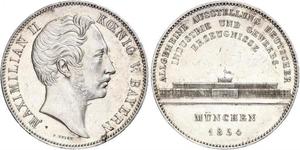
2 Thaler Königreich Bayern (1806 - 1918) ...
Diese Gruppe hat 28 Münzen / 28 Preise
Add coin to this group
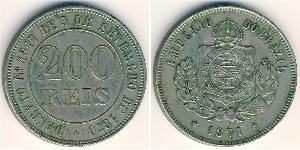
200 Reis Empire of Brazil (1822-1889) Ku ...
Diese Gruppe hat 2 Münzen / 2 Preise
Add coin to this group
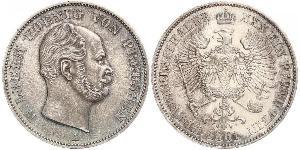
1 Thaler Königreich Preußen (1701-1918) ...
Diese Gruppe hat 15 Münzen / 14 Preise
Add coin to this group

20 Franc / 8 Florin Österreich-Ungarn (1 ...
Diese Gruppe hat 74 Münzen / 71 Preise
Add coin to this group

1 Thaler Königreich Bayern (1806 - 1918) ...
Diese Gruppe hat 13 Münzen / 12 Preise
Add coin to this group
1 Duit Niederlande Kupfer
Diese Gruppe hat 18 Münzen / 17 Preise
⇑
990 coins were uploaded from 2025-05-21 to 2025-05-28
Eine von ihnen ist:

